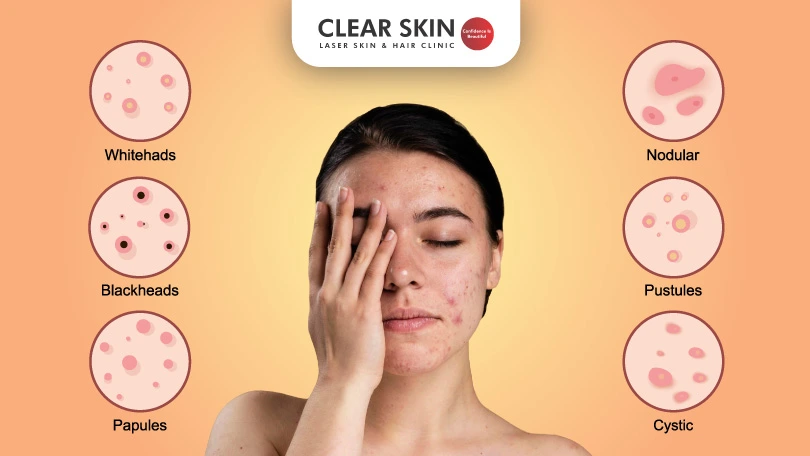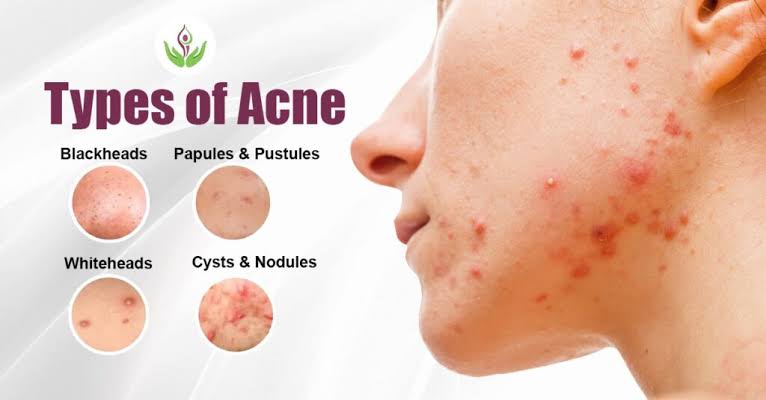Acne is a common skin condition that can affect individuals of all ages, causing physical and emotional distress. From pesky blackheads to more severe cystic acne, understanding the various types, their causes, and effective treatment and prevention strategies is essential for maintaining clear and healthy skin. In this comprehensive guide, we’ll explore the intricacies of acne, shedding light on its types, potential causes, and evidence-based approaches to treatment and prevention. Additionally, we’ll touch upon an innovative therapy known as Celluma LED Therapy and its potential role in managing acne.
Types of Acne:
Whiteheads and Blackheads:
These are non-inflammatory types of acne. Whiteheads occur when pores become clogged with oil and dead skin cells, while blackheads result from open pores with oxidized debris.
Papules and Pustules:
Papules are small, red, and inflamed bumps, while pustules contain pus. These are considered inflammatory acne lesions.
Nodules and Cysts:
Nodules are large, solid, painful lumps beneath the skin, while cysts are deeper and often filled with pus. Both are severe forms of inflammatory acne and may lead to scarring.
Causes of Acne:
Excess Oil Production:
Overproduction of sebum (skin oil) can clog hair follicles, leading to the formation of acne lesions.
Bacterial Overgrowth:
Propionibacterium acnes, a type of bacteria, can multiply in clogged pores, causing inflammation and acne.

Hormonal Fluctuations:
Hormonal changes, especially during puberty, menstruation, and pregnancy, can stimulate oil production, contributing to acne.
Dietary Factors:
Certain studies suggest a potential link between high-glycemic diets and dairy consumption with the development of acne.
Skin Irritation:
Use of comedogenic (pore-clogging) skincare or haircare products can contribute to acne, especially in individuals with sensitive skin.
Treatment Options for Acne:
Topical Treatments:
Over-the-counter and prescription creams, gels, or lotions containing ingredients like benzoyl peroxide, salicylic acid, or retinoids help unclog pores and reduce inflammation.
Oral Medications:
Antibiotics, hormonal birth control, and isotretinoin (Accutane) may be prescribed for moderate to severe acne.
Procedural Treatments:
Dermatological procedures such as chemical peels, microdermabrasion, and laser therapy can address acne and improve skin texture.
Celluma LED Therapy:
An innovative approach to acne management is Celluma LED Therapy. This non-invasive treatment utilizes LED light to reduce inflammation and promote healing. Early studies suggest its potential in managing acne, but more research is needed to establish its effectiveness conclusively.
Preventing Acne:
Gentle Skincare Routine:
Use mild, non-comedogenic cleansers and moisturizers to avoid skin irritation.
:max_bytes(150000):strip_icc()/Health-GettyImages-1390356588-f5c3a87b335a43238d4ef3eff16aa0fe.jpg)
Regular Cleansing:
Wash your face twice daily to remove excess oil and prevent pore blockages. Be mindful of overwashing, as this can strip the skin of natural oils, leading to increased oil production.
Avoiding Touching and Picking:
Resist the urge to touch, pick, or squeeze acne lesions, as this can worsen inflammation and lead to scarring.
Sun Protection:
To protect your skin from UV rays, use a broad-spectrum sunscreen. Some acne medications can increase sensitivity to the sun.
Healthy Diet:
Include a healthy diet full of fruits, veggies, and whole grains. Limit high-glycemic foods and dairy if you suspect a correlation with your acne.
Stress Management:
Chronic stress can exacerbate acne. Incorporate stress-management techniques such as meditation, deep breathing, or yoga into your routine.
Celluma LED Therapy in Acne Management:
Anti-Inflammatory Effects:
Celluma LED Therapy utilizes specific wavelengths of light to reduce inflammation in acne lesions, helping to alleviate redness and swelling.
Promotes Healing:
The therapy is believed to promote healing by enhancing cellular function, potentially accelerating the skin’s recovery process after an acne breakout.
Complementary Treatment:
While not a standalone solution, Celluma LED Therapy can be a complementary treatment alongside other conventional acne management approaches.

Conclusion:
Understanding acne involves recognizing its types, identifying potential causes, and adopting effective treatment and prevention strategies. From conventional topical treatments to emerging therapies like Celluma LED Therapy, individuals have various options to manage acne and achieve clearer, healthier skin. Consulting with a dermatologist allows for personalized recommendations based on the severity and specific characteristics of one’s acne. With a comprehensive approach to skincare and the guidance of healthcare professionals, individuals can navigate the complexities of acne management and work towards achieving a clear and radiant complexion.
Also, Read The Following: full-grain leather


